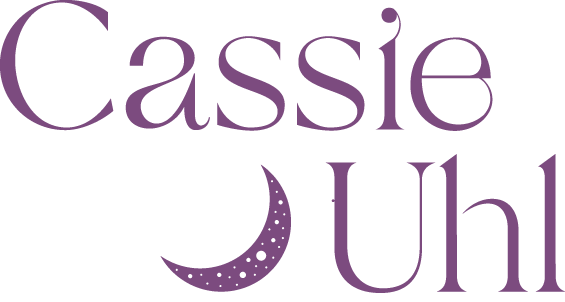- Astrology
- Auras
- Beltane
- Breathwork
- Candle magick
- Card spreads
- Cassie Uhl
- Chakras
- Cleansing
- Crystals
- Dark moon
- Death Care
- Divination
- DIY
- Dreams
- Elements
- Empath
- Energy work
- Free download
- Full moon
- Goddess
- Grief
- Handmade
- Herbs
- How-to
- Imbolc
- Intuition
- Journaling
- Letting go
- Litha
- Lughnasadh
- Mabon
- Magic
- Mantras
- Meditation
- Moon phases
- Mudras
- New moon
- Numerology
- Oracle
- Ostara
- Palmistry
- Plant Allies
- ritual
- Rituals
- Runes
- Sacred geometry
- Samhain
- Seasonal magick
- Shadow work
- Spellwork
- Symbolism
- Tarot
- The Ritual Deck
- Waning moon
- Waxing moon
- Wellness
- Wheel of the Year
- Winter Solstice
- Witchcraft
- Yoga
- Yule
- Zodiac
- air
- apple magic
- apples
- aquarius
- aquarius card spread
- aquarius ritual
- aquarius season
- aries
- astrology
- aura protection
- auras
- autumn equinox
- beltane
- cancer
- cancer season
- candle dressing
- candle magic
- candle magick
- capricorn
- card spread
- cast a circle
- casting circles
- cauldron
- Ceres
- chakra energy
- chakras
- channeling
- charging
- cleansing
- correspondences
- creosote
- Creosote
- crone
- crystal healing
- crystals
- death doula
- death positivity
- death work
- Demeter
- divination
- diy
- dream ritual
- dream rituals
- dream work
- dreams
- dreamwork
- eam
- earth
- eggs
- elements
- emotion code
- empath
- energy
- energy cleansing
- energy protection
- energy work
- fall equinox
- feeling auras
- fire
- four elements
- free meditation
- full moon
- full moon energy
- full moon in gemini
- full moon in pisces ritual
- full moon in scorpio eclipse
- full moon ritual
- gemini
- gemini card spread
- gemini season
- goddess
- grandmothers
- gratitude
- Great mother
- grief
- grief tending
- harvest season
- heart chakra
- herbal magic
- herbal magick
- herbal magick 101
- herbs
- high priestess
- house cleansing
- imbolc
- improving intuition
- infertility
- infertility awareness
- intuition
- intuitive healing
- jen isabel friend
- kunzite
- lammas
- learning tarot
- leo
- leo season
- letting go
- libra
- libra season
- lughnasadh
- Lulu Tineo
- mabon
- manifesting
- meditation
- moon phases
- mother meditation
- mother's day
- new moon
- new moon card spread
- new moon in capricorn
- new moon in leo
- new moon in libra
- new moon meditation
- new moon ritual
- north
- nurturing mother
- oracle
- oracle card spread
- ostara
- pendulum
- pendulums
- Persephone
- pineal gland
- pisces
- pisces full moon ritual
- plant connection meditation
- Plant magic
- popular
- protection magic
- protection magick
- reiki
- releasing
- residual energy
- resiliency
- ritual
- samhain
- scorpio
- scorpio season
- scrying
- seasonal magic
- seeing auras
- shadow work
- shamanic healing
- sigil
- smoke wands
- spell bottle
- spellwork
- Spirits
- spiritual
- spring equinox
- tarot
- tarot myths
- taurus
- taurus season
- the four elements
- third eye
- triple goddess
- understanding the earth element
- virgo
- waning moon
- water
- water is life
- waxing moon
- what are death doulas
- wheel of the year
- winter
- winter solstice
- witch bells
- working with auras
- Yolia Botanica
- yule
- zodiac
Dreamwork 101 // What is Dreamwork and How to Get Started in 5 Steps
Dreamwork is the practice of tending to our relationship with our dreams. We’re dreaming every night, but many of us barely remember our dreams, or if we do, don’t spend much time thinking about them or working with them.(How often have you dismissed a dream as, “oh, it was just a dream?”)

Dreamwork is the practice of tending to our relationship with our dreams. We’re dreaming every night, but many of us barely remember our dreams, or if we do, don’t spend much time thinking about them or working with them.
(How often have you dismissed a dream as, “oh, it was just a dream?”)
But dreams can have a lot to teach us and offer us when we enter into a deeper relationship with them. The dreamworld is rich with feelings, desires, needs, and possibilities. Our understanding of what the dreamworld evokes and presents can support our physical lives and our connections to ourselves.
In this blog post, I’ll share a bit about how to start a dreamwork practice of your own.
Dreamwork Lineage
First, I’d like to share my dreamwork lineage. What I know about dreamwork comes from the work of these folks in particular, as well as my own intuition and my ancestors:
These are wonderful people to go deeper into dreamwork with if you feel so called.
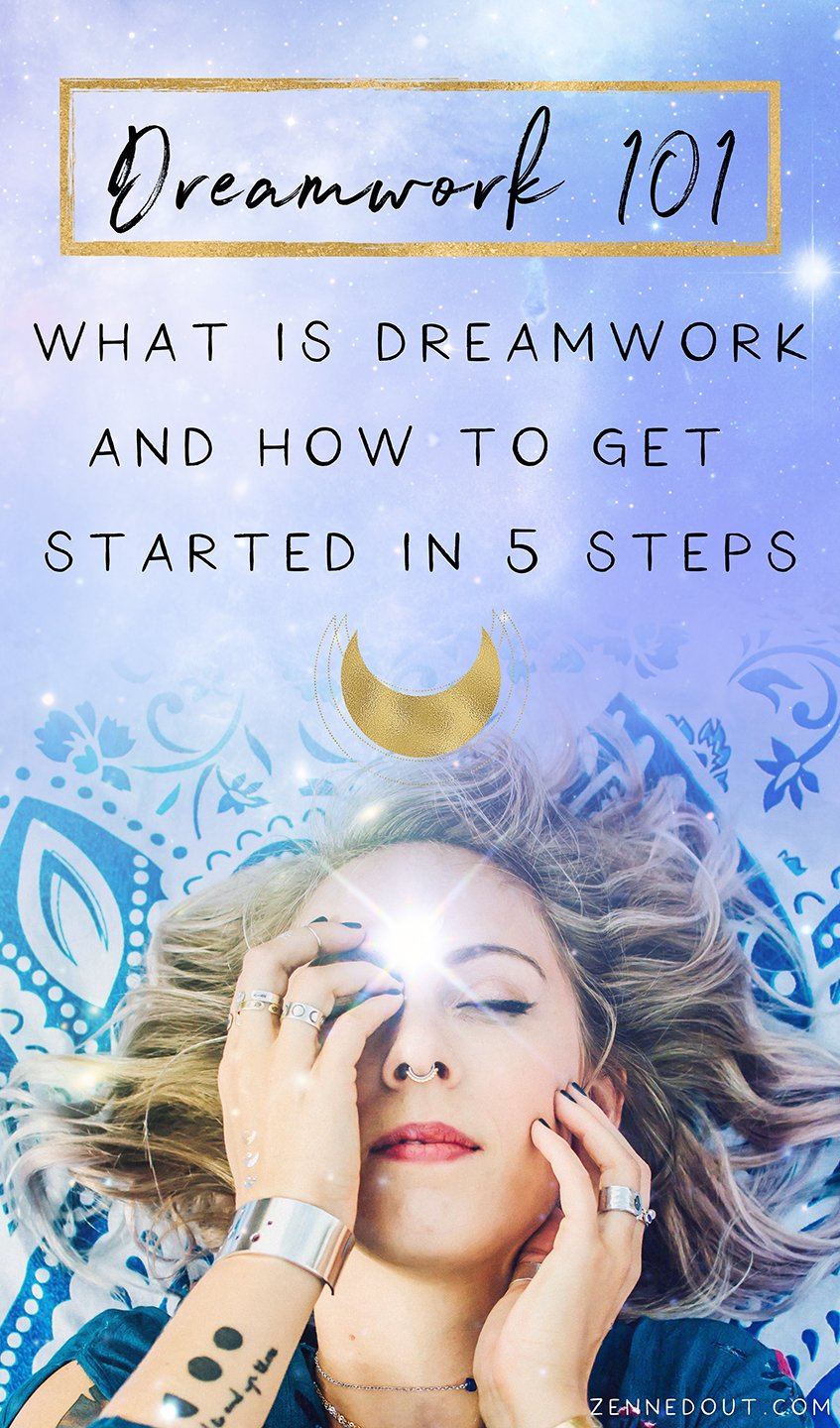
1. Support Dream Recall + Sleep
The simplest of ways to begin supporting your dreaming is by supporting sleep and dream recall. It’s difficult to consciously work with our dreams if we’re not sleeping well or can’t remember our dreams when we wake up. Everyone is different, but here are some things you might like to explore to support your sleep:
Set screen time boundaries for a certain amount of time before bed
Drink a tea to support your sleep, like chamomile (always do your own research and check with a professional before ingesting herbs)
Create your own sleep ritual that helps you shift into rest mode
Meditate and/or do a gentle, restorative yoga practice
Take a few minutes to journal brain-dump style to help clear your mind.
To support your dream recall, there are a few things I find helpful:
Set an intention to dream and to remember your dream(s) before you go to sleep (you can write this down, say it out loud, or just tell it to yourself silently)
Take a few minutes in bed in the morning before you get out of bed (or look at your phone) to give yourself space to remember your dream.
Create a dream altar and meditate at it before bed to welcome your dreams to come
Pay attention to the dreams you do receive by tending them (more on that below!)

2. Start a Dream Journal
This is probably the number one tip anyone you ask about dreamwork will give you, and with good reason! A dream journal creates a container for tending your dreams, helps solidify your intention to connect with your dreams, and helps you understand your dreams.
I recommend choosing a dedicated journal for your dreamwork and placing it on your dream altar when you’re not using it if you have one. As soon as you wake up (definitely before you look at any devices), put pen to paper and record your dream. Try recording your dreams in the present tense to honor its aliveness (for example, instead of "I was walking by a river,” try “I’m walking by a river).
If it feels available to you, you might like to marinate in the dream in bed for a few minutes before actually getting up and reaching for your journal to record.
3. Explore Dream Feelings & Textures
After you record your dream, there are many ways to work with it more deeply and explore the messages it might have for you.
I like to explore the dream textures: what are the textures, sights, smells, tastes, sounds of the dream? What do those senses mean for you and evoke for you? How do they make you feel? How does the dream, in general, make you feel?
4. Understand Dream Associations
As you work with the dream you’ve recorded, notice what stands out to you. Maybe your red dress feels particularly alive, or the hawk sparks something for you, or you feel curious about a figure in your dream.
Whatever you feel curious about, do a bit of freewriting about it. List out: what does this thing make you think of? How does it make you feel?
For example, some associations that come up with hawks for me:
Hawk feather
Maggie Smith’s poetry book Good Bones
Mothers
Protecting your children
Imagination
Play
Notice how I’m not so focused on the hawk itself, but I follow the threads of what each thing is associated with! Now I have something interesting to work with and can ask myself questions like, "what’s my relationship with play right now?"
Some of the associations you make might really surprise you and can offer deeper insight into your dream.
5. Assign Dream Correspondences
As you continue to work with your dreams, you start to develop some personal symbols and correspondences.
Like you saw above in my example with the hawk, I could make a section in my journal where I note that hawk led me to mothers and children and play. When I see a hawk again in my dream, I have that reference and can ask myself if/how it applies to this dream.
Over time, you can deepen your understanding of your own personal dream symbols and correspondences. I love this practice so much because, to me, it’s not about what a certain symbol means but about what it means to you, how it feels in your body, how it resonates with your ancestry. That’s what feels potent and powerful!
Dreams Aren’t Your Personal Vending Machine
It feels important to state that working with dreams isn’t just asking a question and receiving an answer. Generally, it’s not a simple or linear way of working. There isn’t one true or hidden meaning that we need to uncover.
In my eyes, dreams and the dreamworld are alive. So it truly is a practice of engaging in relationship with, of exploring. You might like to ask yourself, "how can I be in equal exchange with my dreams?" How can I honor the dream world and not just extract from it?
Dreams have such potential to expand us out of binary thinking and into visionary possibilities, especially if we acknowledge that power and allow them to take us there!
Going Deeper with Your Dreams
Another way to explore dream tending and go a bit deeper is by asking for a dream. I share how to do this in the dreamwork ritual I shared for Pisces season, which you can find here.
Feel free to contact us and share: how is your dream practice going? How is your relationship with your dreams evolving?
Dreamwork Ritual for Pisces Season + Card Spread
Pisces, our mutable water sign and last sign of the zodiac, evokes the artist, the mystic, the dreamer, in all of us with its connection to music, poetry, spirituality, and the dream world.In this blog post, I’ll be sharing a card spread and a ritual for Pisces season.
3 Ways to Understand the Health of your Chakras
When it comes to working with chakra energy, one of the first questions I receive is how to know if your chakras are blocked. Like all things relating to energy work, there are a variety of ways to approach working with your chakras.Before we dive in, the most important thing for you to understand is how you receive extrasensory information. I dive deeper into this topic in a past blog post here. If you don't know what kind of "clair" you are, I suggest you give it a quick read. You can also check out a graphic I created below for some of the most common clairs.
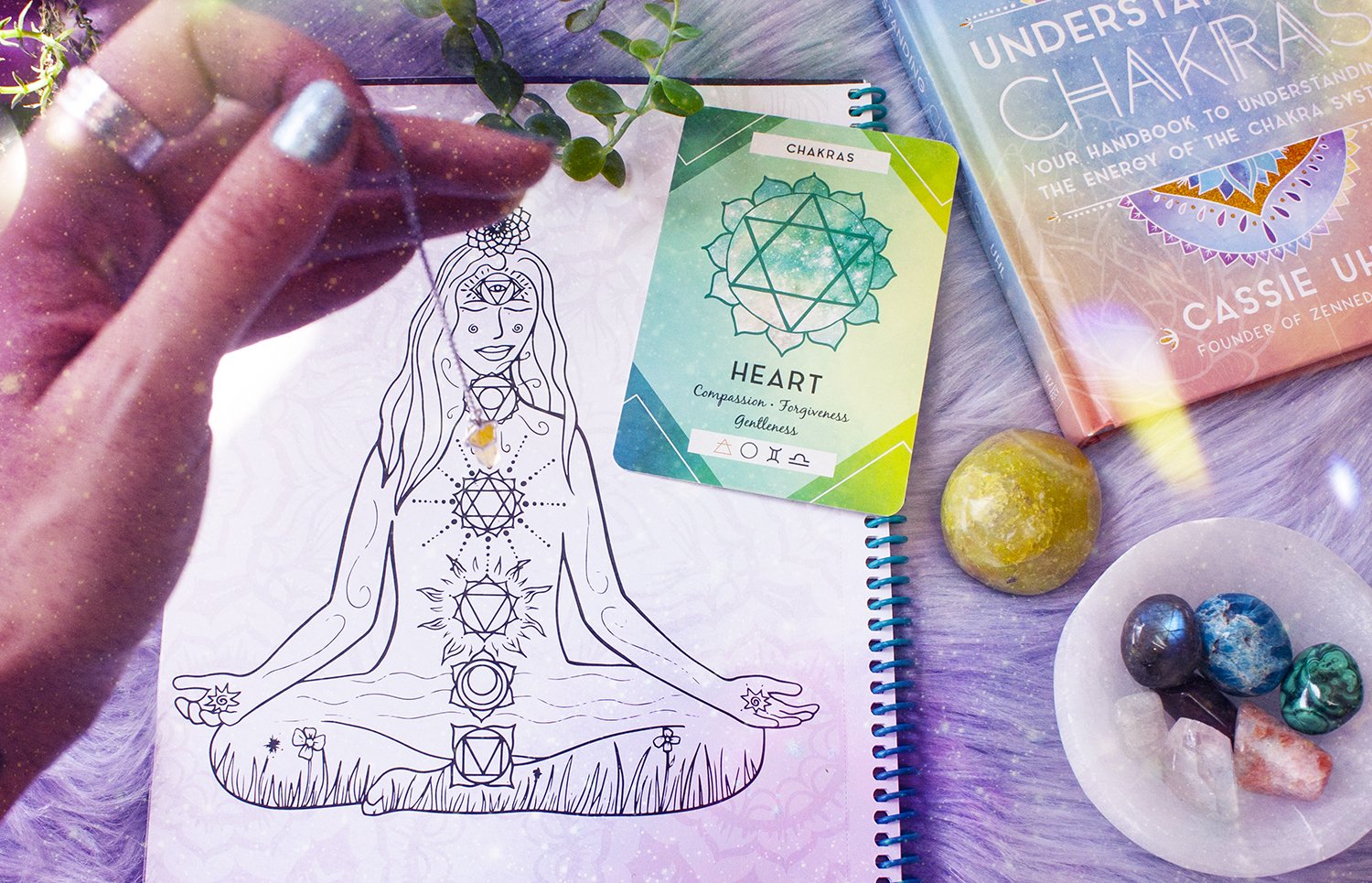
When it comes to working with chakra energy, one of the first questions I receive is how to know if your chakras are blocked. Like all things relating to energy work, there are a variety of ways to approach working with your chakras.
Before we dive in, the most important thing for you to understand is how you receive extrasensory information. I dive deeper into this topic in a past blog post here. If you don't know what kind of "clair" you are, I suggest you give it a quick read. You can also check out a graphic I created below for some of the most common clairs.
In this post, I'll break down why understanding the health of your chakras can be beneficial to you in everyday life and in your spiritual growth. I share three methods in this post, which you can apply to understand the health of your chakras and, in some cases, heal them.
Why would you want to understand the health of your chakras?
As above, so below. As within, so without. I refer to this adage often because it's so applicable to spiritual work. What goes on in your energetic body (auras and chakras) can also manifest in your physical body and vice versa.
Understanding the health of each of your chakras will shed light on your physical health, current life situations, future path, and where you may want to focus your energy.
Let's dig into some ways to start working with and understanding the energy of your chakras.
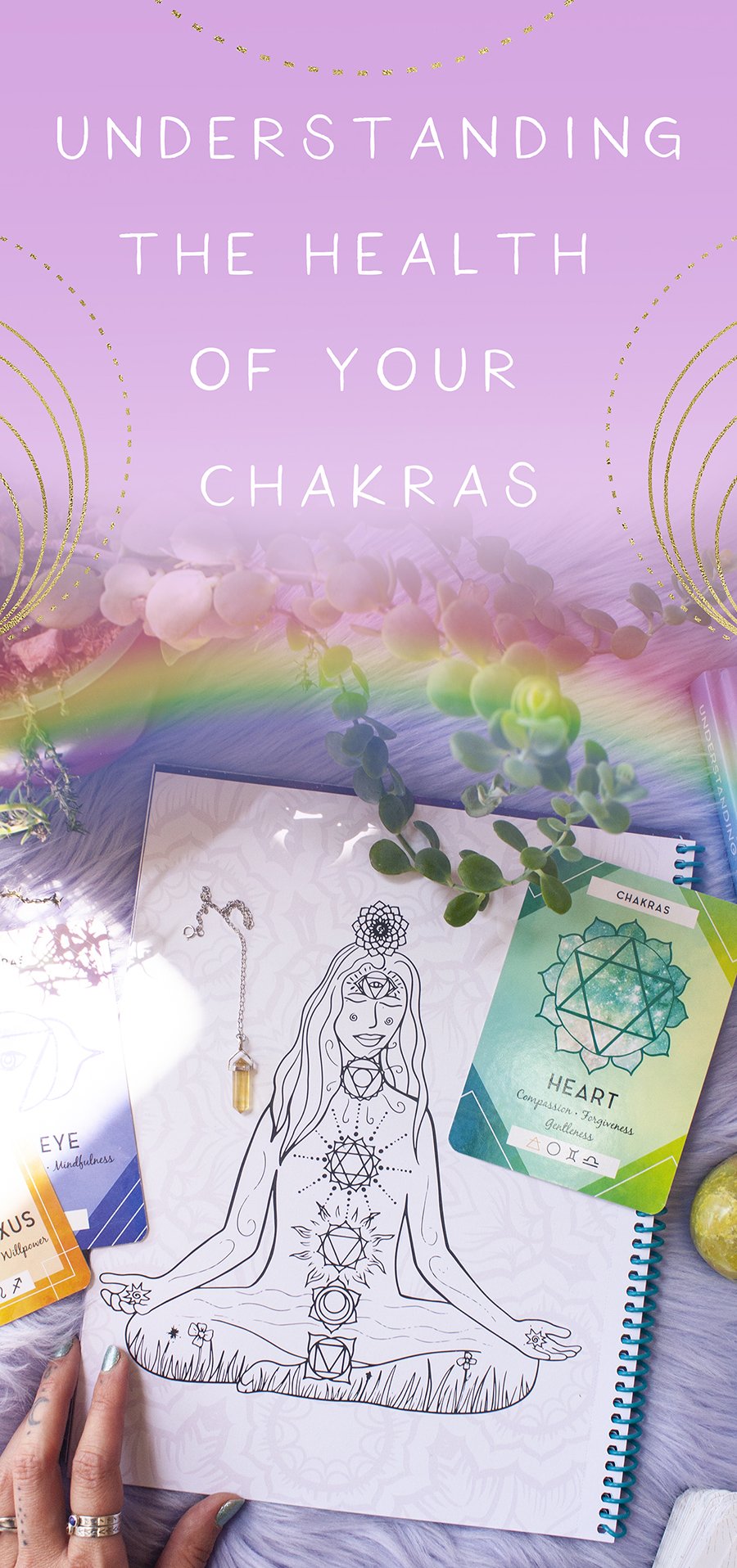
Understanding the Polarities of Each Chakra
Understanding the traits associated with each chakra will enable you to ascertain the health of your chakras quickly. This method can take a bit of time, especially if the chakras are new to you. You'll need to have a deep understanding of the polarities of each chakra. What I mean by this are the traits of each chakra when they're functioning optimally, and the shadow aspects of them as well when they're blocked. The expression of each chakra can range from overly open, balanced, to totally blocked, or somewhere in between. I discuss this more in this video.
Here's an example of how this technique can be applied. Have you ever felt overwhelmed and like you can't focus? These are all manifestations of a blocked or stagnant root chakra. The root chakra is responsible for your sense of safety and connection to the earth. If you're feeling this way, the next step would be to take action to activate and balance your root chakra. This could mean simply taking a break to go for a walk outside or performing a quick root chakra meditation.
Here are my top suggestions to gain a better understanding of the polarities of each chakra.
If you want to dive into understanding the chakras right now, find blog posts on each of the chakras here: root chakra, sacral chakra, solar plexus chakra, heart chakra, throat chakra, third eye chakra, and the crown chakra.
I also cover the chakras in The Goddess Discovery Book V1, The Ritual Deck, and in my new book Understanding Chakras. These are great options if you'd like ritual suggestions and tools to go along with each chakra.
For deep dives into understanding each of the chakras, I suggest Wheels of Life by Anodea Judith PhD and the Complete Book of Chakras by Cyndi Dale. I'm particularly fond of Dale's book as it offers information on chakra systems from around the world.
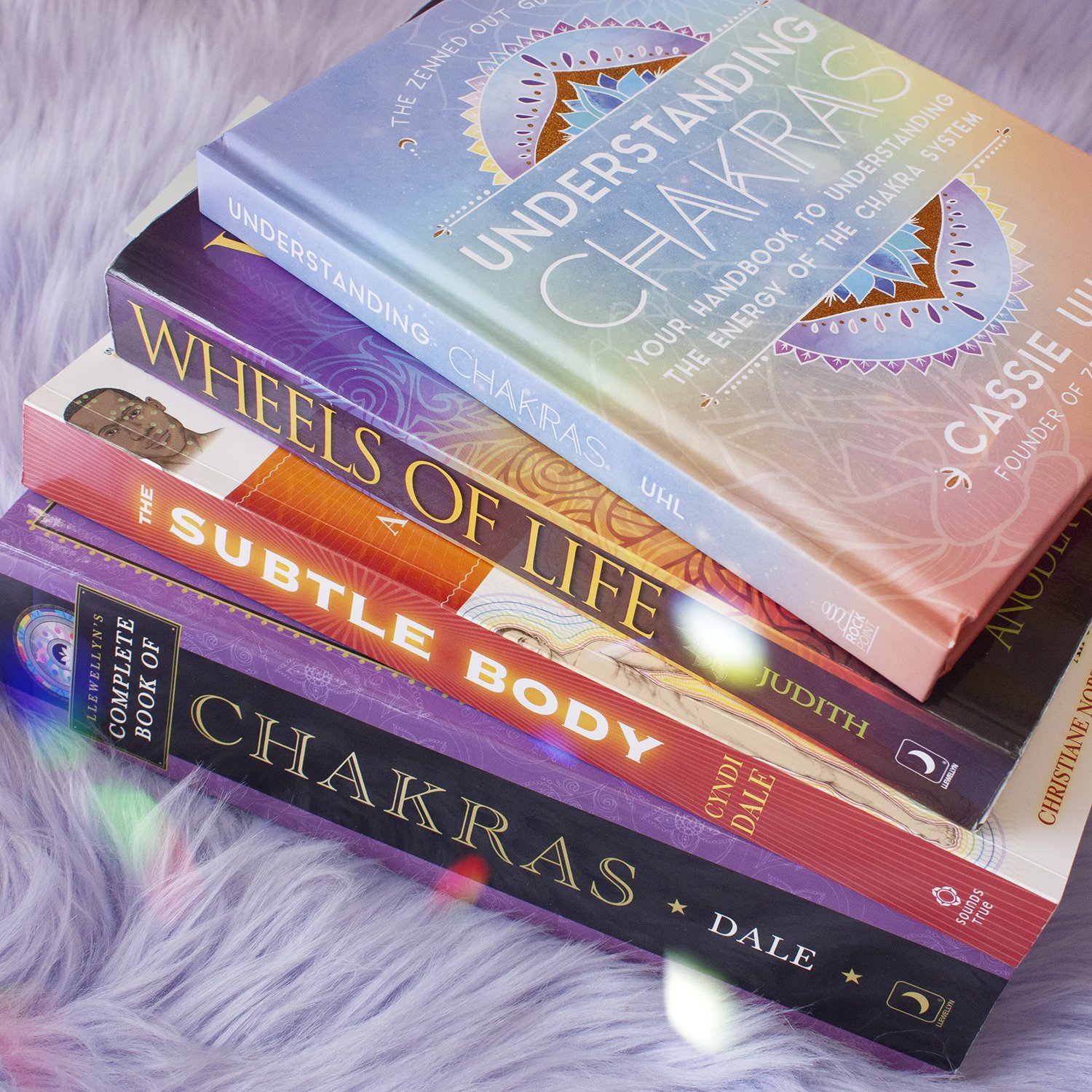
Feeling Chakra Energy with your Hands
If you consider yourself clairsentient and feel energy easily, this technique will work well for you. Even if you're not clairsentient, I encourage you to try, as anyone can learn and acquire new kinds of psychic abilities!
Your chakras are spinning wheels of energy, continually taking in and emitting energy. If you have the gift of clairsentience, you'll be able to feel this energy coming out of your body. I share the best way to get started with this technique in a previous post that also has a video breaking this technique down. Click here to check it out.
Essentially, you're going to want to get yourself into a meditative state, activate the chakras in your hands by rubbing them together and begin to hover your hands above where each of your chakras is. You may start to feel a bulge of energy push your hands out as you come near each chakra. How far the chakra comes out from your body can be an indication of how under or overactive it is. You may also receive information about the health of each chakra as you feel into each one.
Using a Pendulum to Work with Your Chakras
Pendulums are such a useful spiritual tool! If pendulums are brand new to you and you want to get the basics, check out this previous post here. There are SO many useful applications for pendulums, and understanding the health of your chakras is one of them. The technique I share here works well for doing chakra readings on yourself or others. If you're working on yourself or someone else remotely, you'll need a pendulum and a piece of paper or a drawing of someone with the chakras. You don't need anything fancy though and can even use a piece of paper with the chakras written down on it as a reference. Your pendulum won't know the difference! If you're working on someone else in person, all you'll need is your trusty pendulum.

Before you start, ensure that you have formed a good relationship with your pendulum. You must understand how your pendulum communicates with you. Generally speaking, a clockwise swirl means "yes" or "open," and a counterclockwise swirl means "no" or "closed."
How to check your chakras with a pendulum:
As with all spiritual work, take a moment to quiet yourself.
Call on any spiritual support you'd like (guides, angels, ancestors, etc.).
Hold your pendulum over each chakra and ask if the chakra is open or closed.
The pendulum should begin to swirl one way or the other, indicating the health of each chakra. It is possible that the pendulum won't move at all; check out this previous post I mentioned above for more on why a pendulum might not move.
Once finished, thank any spiritual aids you called on.
As always, run any information you received through your intuitive filter, and if it feels off, you don't have to act on it. If you feel like the reading you received from your pendulum is accurate, you can now take steps to work with any chakras that may be blocked, stagnant, or overactive.
The best thing about the pendulum technique is that after you've worked with a chakra that's a little off, you can retest with your pendulum. I'm often astounded at how quickly I'll get an open and balanced swirl from my pendulum after working on a chakra that needed some extra love.
